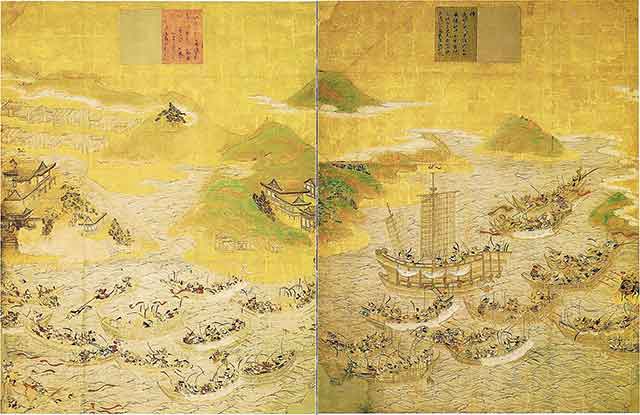
The Battle of Dan-no-ura, also known as Dan-no-ura no tatakai, was a significant naval battle during the Genpei War. It took place at Dan-no-ura in the Shimonoseki Strait, located off the southern tip of Honshū, Japan. On April 25, 1185 (or March 24, 1185, according to the official page of Shimonoseki City), the fleet of the Minamoto clan, led by Minamoto no Yoshitsune, achieved a decisive victory over the fleet of the Taira clan. The battle unfolded with the advantage of the morning rip tide initially favoring the Taira, but it later turned against them in the afternoon. Among the casualties were Taira nobles, including the young Emperor Antoku.
During the battle, the Taira faced a difficult situation as the war had been unfavorable for them. Although they still had the Emperor's support and possessed the Imperial Regalia symbolizing imperial authority, they had lost much of their territory. Nevertheless, they had the advantage of fighting on their home turf with experienced southern warriors who were familiar with the local waters. Despite being weaker in terms of military strength (despite having more ships), the Taira possessed superior knowledge of the tides in the area and naval combat tactics. Additionally, the Taira commander faced the challenge of his son, Taguchi Shigeyoshi, being held hostage by the Minamoto. Some Taira generals advised dismissing or executing Shigeyoshi as a liability, but the commander believed in his loyalty and kept him within their ranks. The Taira also brought the young emperor, dressed in full court attire, along with some of his retainers, aiming to inspire their troops and demonstrate the legitimacy of their cause.
The Taira fleet divided into three squadrons, while the Minamoto arrived in full force with ships aligned and archers prepared. The battle commenced with a long-range exchange of arrows before the Taira seized the initiative and attempted to surround the enemy ships using the tides to their advantage. They engaged the Minamoto in close combat, transitioning from archery to hand-to-hand combat with swords and daggers as the crews boarded each other's ships. However, the tide changed, shifting the advantage back to the Minamoto.
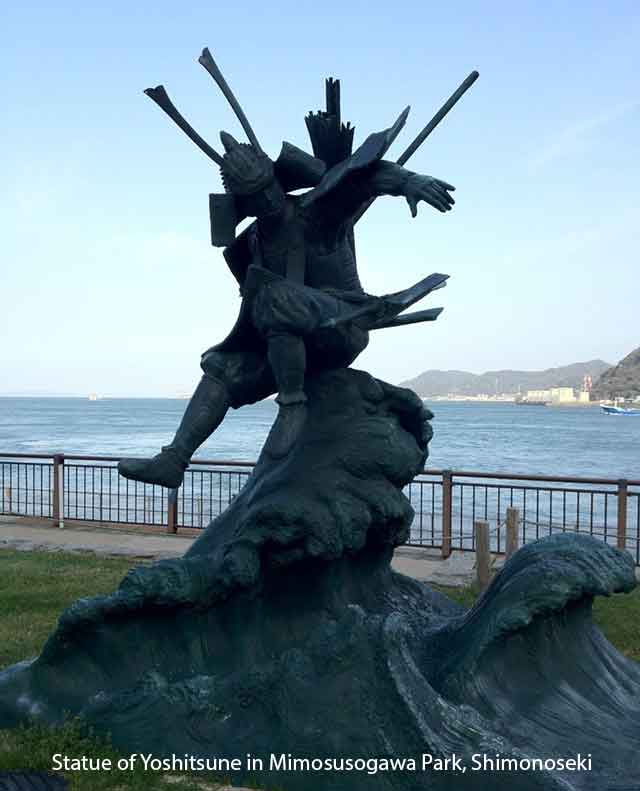
One crucial factor that contributed to the Minamoto's victory was Taguchi Shigeyoshi's defection. His squadron attacked the Taira from the rear and revealed the location of Emperor Antoku's ship to the Minamoto. The Minamoto archers redirected their focus to the helmsmen, rowers, and the rest of the Taira fleet, causing chaos and loss of control. Witnessing the battle turning against them, many Taira members chose to commit suicide. Those who perished included Antoku, his grandmother (Nun of the Second Rank, Taira no Tokiko), and Taira no Kiyomori's widow, Taira no Tokiko. The Taira attempted to throw the imperial regalia into the sea to prevent them from falling into the hands of the Minamoto, managing to discard the Kusanagi sword and Yasakani jewel before their ship carrying the regalia was captured. According to legend, the woman who attempted to throw the mirror gazed into it and instantly perished due to its spiritual power. Divers later recovered the jewel, while the fate of the sword remains uncertain. Eventually, a new sword was found and enshrined at Atsuta Shrine, although different explanations exist regarding its origin.
The decisive defeat of the Taira in this battle marked the end of their quest for control over Japan. Minamoto no Yoritomo, the elder half-brother of Minamoto Yoshitsune, became the first shōgun and established the Kamakura shogunate, a military government, in Kamakura. Notable Taira casualties in the battle included Taira Tomomori, Taira Noritsune, Taira Norimori, Taira Tsunemori, Taira Sukemori, Taira Arimori, and Taira Yukimori, who were all killed.
See also
-
The Siege of Hara Castle

The Shimabara Rebellion of 1637–1638, which culminated in the siege of Hara Castle, was the last major uprising of the Edo period and had serious political consequences.
-
Battle of Tennoji

The confrontation between Tokugawa Ieyasu and Toyotomi Hideyori during the “Osaka Winter Campaign” ended with the signing of a peace treaty. On January 22, 1615, the day after the treaty was signed, Ieyasu pretended to disband his army. In reality, this meant that the Shimazu forces withdrew to the nearest port. On the same day, almost the entire Tokugawa army began filling in the outer moat.
-
Siege of Shuri Castle

The Ryukyu Kingdom was established in 1429 on Okinawa, the largest island of the Ryukyu (Nansei) archipelago, as a result of the military unification of three rival kingdoms. In the following years, the state's control spread to all the islands of the archipelago.
-
The Siege of Fushimi Castle
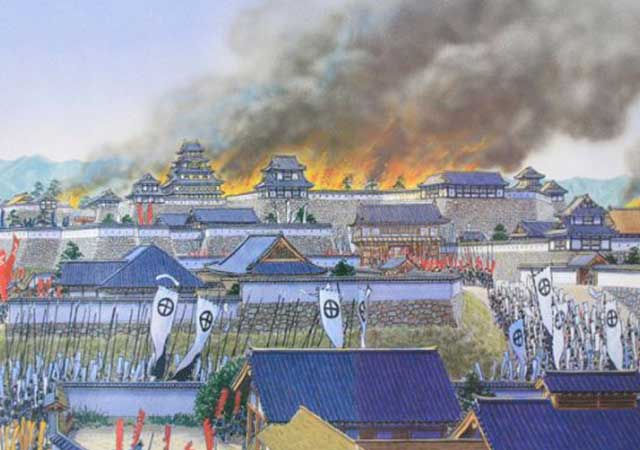
Fushimi can perhaps be considered one of the most “unfortunate” castles of the Sengoku Jidai period. The original castle was built by Toyotomi Hideyoshi in the southeast of Kyoto in 1594 as his residence in the imperial city.
-
The Siege of Otsu Castle
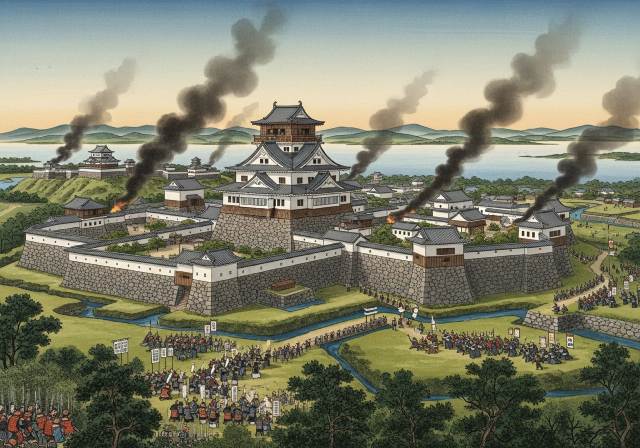
The siege of Otsu Castle was part of the Sekigahara campaign, during which the so-called Eastern Coalition, led by Tokugawa Ieyasu, fought against the Western Coalition, led by Ishida Mitsunari. Otsu Castle was built in 1586 by order of Toyotomi Hideyoshi near the capital Kyoto, on the site of the dismantled Sakamoto Castle. It belonged to the type of “water castles” — mizujō — as one side of it faced Japan's largest lake, Lake Biwa, and it was surrounded by a system of moats filled with lake water, which made the fortress resemble an island.
-
The Siege of Shiroishi Castle
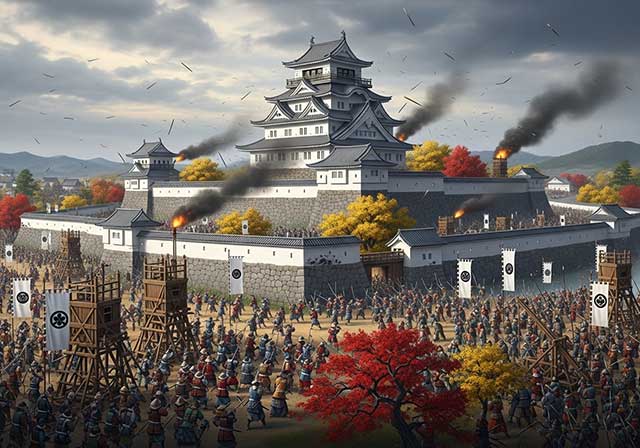
The siege of Shiroishi Castle was part of the Sekigahara campaign and took place several months before the decisive battle of Sekigahara. The daimyo of Aizu Province, Uesugi Kagekatsu, posed a serious threat to Tokugawa Ieyasu's plans to defeat the Western Coalition, and Ieyasu decided to curb his actions with the help of his northern vassals. To this end, he ordered Date Masamune to invade the province of Aizu and capture Shiroishi Castle.
-
The Second Siege of Jinju Castle
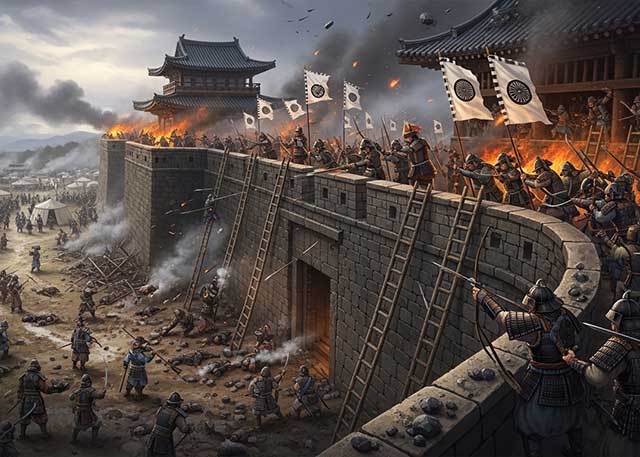
During the two Korean campaigns of the 16th century, the Japanese repeatedly had to capture enemy fortresses and defend occupied or constructed fortifications from the combined Korean and Chinese forces. Among all the operations of that time, the second siege of Jinju Castle is considered the most interesting from the point of view of siege warfare.
-
The Siege of Takamatsu Castle
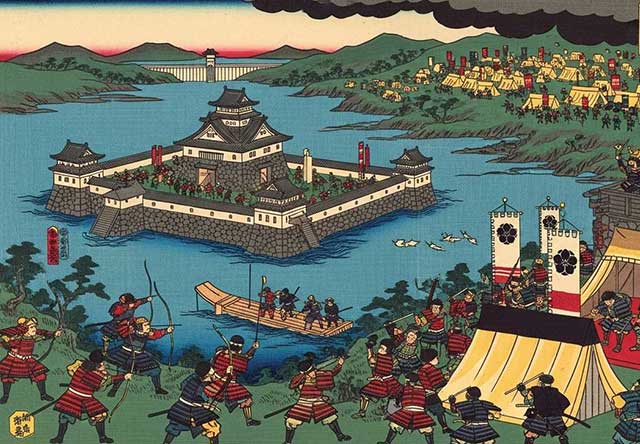
The siege of Takamatsu Castle in Bitchu Province is considered the first mizuzeme, or “water siege,” in Japanese history. Until then, such an original tactic had never been used.

